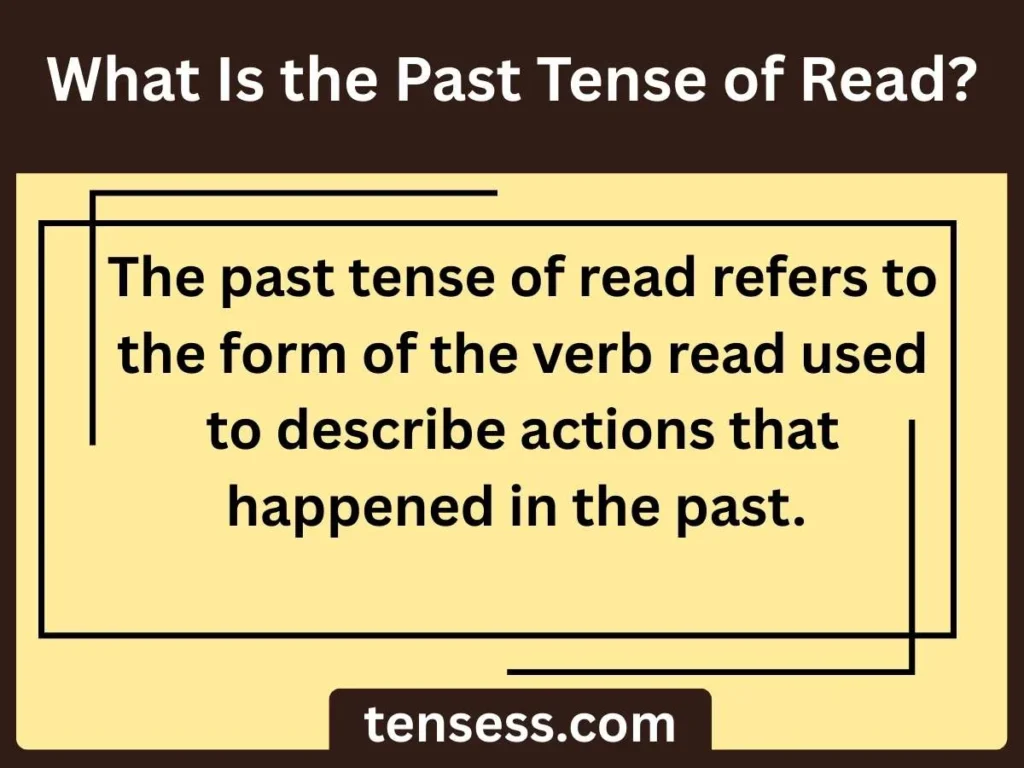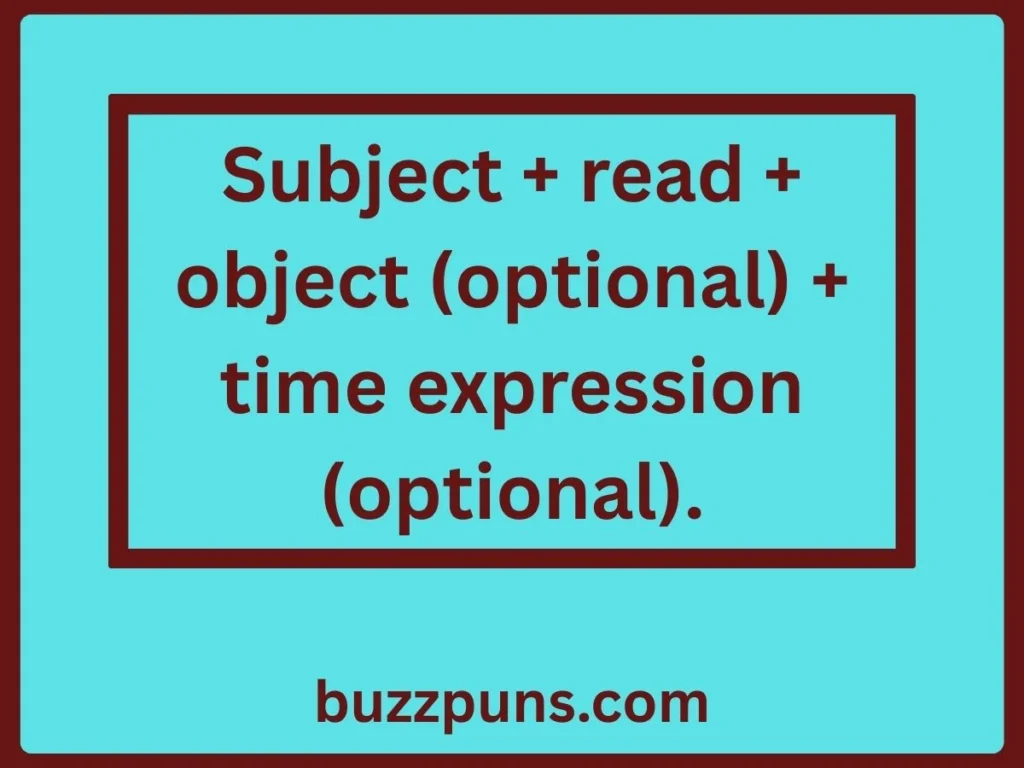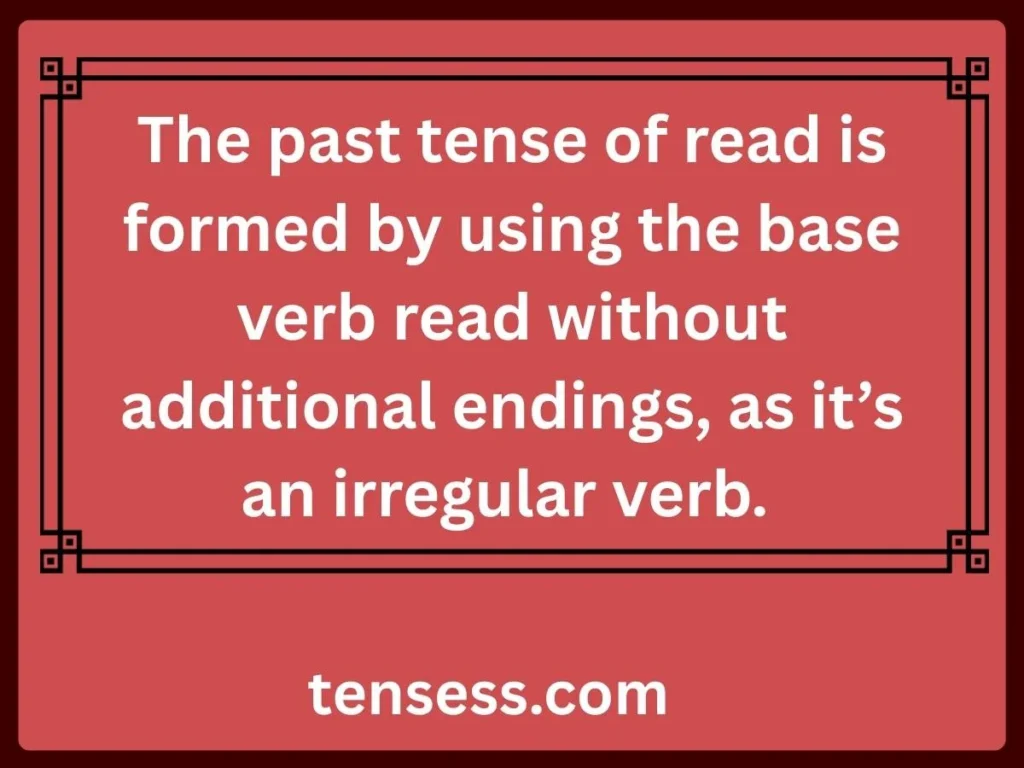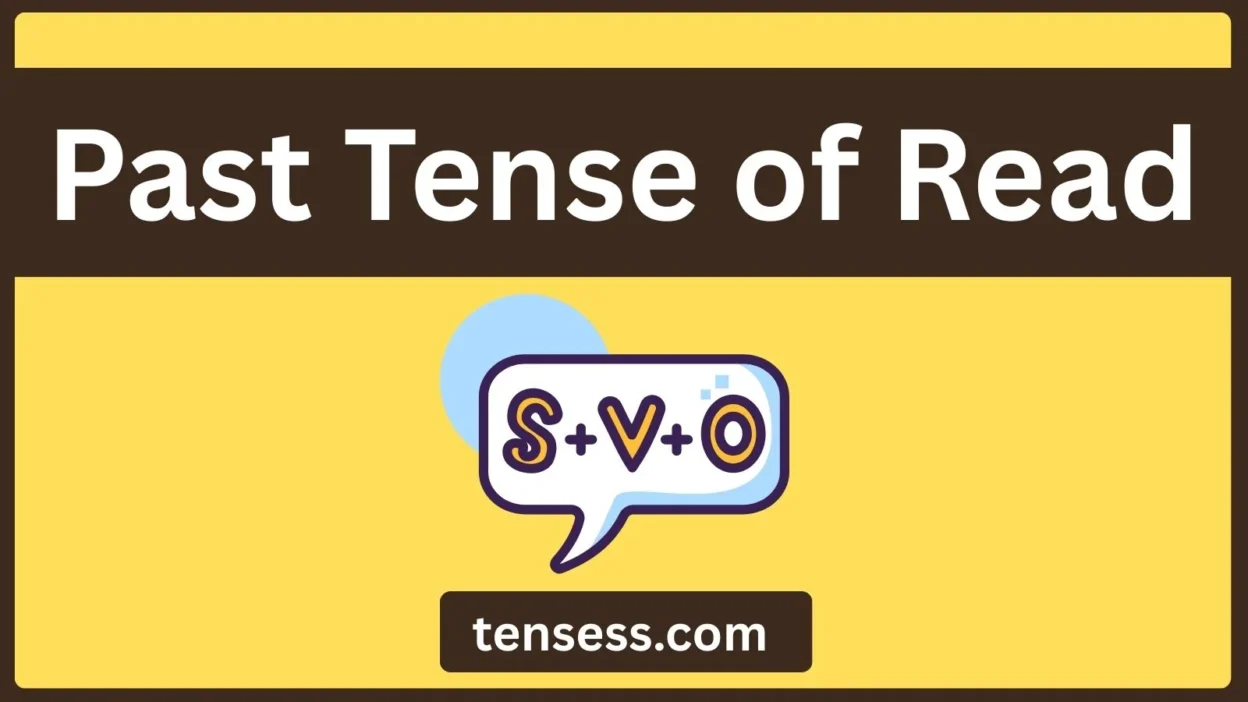The past tense of read is a fascinating topic for students, language learners, writers, and grammar enthusiasts.
While the verb read (pronounced /riːd/ in the present tense) is common, its past tense form, read (pronounced /rɛd/), can be tricky due to its irregular nature and identical spelling.
Understanding how to use the past tense of read correctly is essential for clear communication, whether you’re writing a story, crafting an essay, or speaking fluently.
In this beginner-friendly guide, we’ll explore the past tense of read, its conjugation, sentence structure, and practical examples.
We’ll also cover common mistakes, synonyms, and tips to master this verb tense.
By the end, you’ll feel confident using read in the past tense in any context.
Let’s dive into this grammar journey and make the past tense of read easy to understand!
What Is the Past Tense of Read?

Unlike the present tense read (/riːd/), the past tense is read (/rɛd/), which can confuse learners due to its different pronunciation but identical spelling. This tense is used to talk about completed actions, like reading a book or a letter in the past.
Recognition Past Tense of Read

For example, “I read a novel yesterday” indicates a completed action.
Structure of Sentence in Past Tense of Read
Sentences in the past tense of read typically follow this structure:

- Example: “She read the newspaper this morning.”
Formation Past Tense of Read

No helping verbs are needed for the simple past tense.
Verbs
The verb read is the focus here, and its past tense form is read (/rɛd/). It doesn’t follow standard rules like regular verbs (e.g., walk → walked).
Helping Verbs
In the simple past tense of read, no helping verbs are required. However, in perfect tenses (e.g., past perfect), helping verbs like had are used (e.g., “I had read”).
Define the Verb in That Specific Tense
In the past tense, read (/rɛd/) describes an action of interpreting or understanding written text that occurred in the past.
Regular or Irregular Verb
The verb read is irregular because it doesn’t follow the standard “-ed” ending for past tense (e.g., talk → talked). Instead, it changes pronunciation and uses the same spelling.
10 Simple Sentence Examples
- I read a book last night.
- She read the instructions carefully.
- We read the poem in class.
- He read the email yesterday.
- They read the signs on the road.
- You read the article quickly.
- The teacher read the story aloud.
- It read like a mystery novel.
- John read the letter twice.
- The children read comics all day.
How to Conjugate Past Tense of Read
Conjugating the past tense of read is straightforward because it’s an irregular verb that doesn’t change based on the subject. The form read (/rɛd/) is used for all subjects.
Conjugation Table
| Subject | Conjugation |
| I | read |
| You | read |
| He/She/It | read |
| We | read |
| They | read |
Spelling Changes or Irregularities
There are no spelling changes in the past tense of read; it remains read. The key irregularity is the pronunciation shift from /riːd/ (present) to /rɛd/ (past).
Examples of Past Tense of Read Sentences
Here are 10–15 examples showcasing the past tense of read with different subjects:
- I read a fantasy novel last weekend.
- You read the recipe before cooking.
- He read the news on his phone.
- She read a bedtime story to her kids.
- It read like a professional report.
- We read the map to find the trail.
7.—they read the book in one sitting. - John read the contract carefully.
- The students read the chapter for homework.
- I read her text message late at night.
- You read the instructions aloud.
- He read a poem at the event.
- She read the email and replied instantly.
- We read the reviews before buying.
- They read the novel for book club.
Common Mistakes with Past Tense of Read
Here are frequent errors learners make with the past tense of read and how to avoid them:
- Mispronouncing the past tense: Saying /riːd/ instead of /rɛd/. Tip: Practice the pronunciation /rɛd/ for past tense.
- Confusing with present tense: Using read (/riːd/) for past actions. Tip: Check the time context of the sentence.
- Adding “-ed”: Writing readed instead of read. Tip: Remember read is irregular.
- Using wrong helping verbs: Saying “I have readed” instead of “I have read.” Tip: Use read for perfect tenses too.
- Spelling confusion: Mixing up read (past) with read (present). Tip: Focus on pronunciation and context.
- Incorrect time markers: Using present time markers like “now” with past tense. Tip: Use past time expressions (e.g., yesterday).
- Overusing helping verbs: Saying “I did read” unnecessarily. Tip: Use read alone for simple past.
- Confusing with similar verbs: Mixing read with lead or red. Tip: Check the verb’s meaning.
- Forgetting context: Using read without a clear past context. Tip: Include time indicators.
- Pronunciation in fast speech: Slurring /rɛd/ into /riːd/. Tip: Speak slowly to emphasize /rɛd/.
Related Verbs and Synonyms for Past Tense of Read
The verb read has synonyms and related verbs that can be confused with it. Here are some examples:
- Peruse: To read carefully. Example: She perused the document vs. She read the document.
- Scan: To read quickly. Example: He scanned the article vs. He read the article.
- Browse: To read casually. Example: I browsed the magazine vs. I read the magazine.
- Study: To read with focus. Example: She studied the textbook vs. She read the textbook.
- Skim: To read superficially. Example: They skimmed the report vs. They read the report.
- Review: To read for evaluation. Example: He reviewed the draft vs. He read the draft.
- Examine: To read closely. Example: She examined the letter vs. She read the letter.
- Glance: To read briefly. Example: I glanced at the note vs. I read the note.
- Red (homophone): Often confused due to similar sound. Example: The book was red, not read.
- Lead (verb): Confused due to spelling similarity. Example: He led the team, not read the team.
Tips to Practice Using Past Tense of Read
- Read aloud: Practice saying read (/rɛd/) in past tense sentences.
- Write daily: Use read in journal entries about past events.
- Listen to native speakers: Notice how they pronounce read in past contexts.
- Use flashcards: Create cards with present and past forms of read.
- Engage in storytelling: Tell stories using the past tense of read.
- Correct mistakes: Review your writing for read errors.
- Practice with apps: Use grammar apps to test past tense usage.
- Read books: Identify read in past tense while reading.
- Speak with friends: Use read in conversations about past activities.
- Take quizzes: Test your knowledge with online verb tense quizzes.
Frequently Asked Questions
- What is the past tense of read?
It’s read (/rɛd/), not /riːd/. - Is read a regular or irregular verb?
It’s irregular; it doesn’t take “-ed.” - How do you pronounce read in past tense?
Pronounce it /rɛd/, not /riːd/. - Can read be used in perfect tenses?
Yes, e.g., “I have read the book.” - Why is read spelled the same in present and past?
It’s an irregular verb with identical spelling but different pronunciation. - What’s a common mistake with read?
Saying readed instead of read. - How do I practice read in past tense?
Write sentences and practice pronunciation. - Are there synonyms for read?
Yes, like peruse, scan, or study. - Can read be confused with other verbs?
Yes, with lead or red due to spelling/pronunciation. - Is read used differently in British vs. American English?
No, the past tense is the same.
Exercises
- Write 5 sentences using read in the past tense.
- Correct this sentence: “I readed a book.”
- Fill in the blank: She ___ the letter yesterday.
- Pronounce read in past tense aloud 10 times.
- Rewrite: “I read the article now” to past tense.
- Identify the error: “They read (/riːd/) a story.”
- Create a dialogue using read in past tense.
- List 3 synonyms for read and use them in sentences.
- Write a paragraph about a book you read.
- Match subjects (I, you, they) to read in sentences.
Quizzes
- What is the past tense of read? (a) readed (b) read (/rɛd/) (c) read (/riːd/)
Answer: (b) read (/rɛd/) - Is read regular or irregular?
Answer: Irregular - Correct the sentence: “I have readed a book.”
Answer: I have read a book. - Pronounce: He read the poem.
Answer: /rɛd/ - Fill in: They ___ the novel last week.
Answer: read - True/False: Read changes spelling in past tense.
Answer: False - Choose the synonym: (a) walk (b) peruse (c) eat
Answer: (b) peruse - Fix: “She read (/riːd/) the email.”
Answer: She read (/rɛd/) the email. - Write a past tense sentence with read.
Answer: Example: I read a comic yesterday. - Identify the error: “I read the book now.”
Answer: Use past time marker (e.g., yesterday).
Conclusion
Mastering the past tense of read is a key step for students, language learners, and writers aiming to improve their grammar.
By understanding its irregular form, pronunciation (/rɛd/), and proper usage, you can confidently use read in past tense sentences.
This guide covered everything from conjugation and sentence structure to common mistakes and practice tips.
Whether you’re writing essays, telling stories, or speaking fluently, the past tense of read will enhance your communication.
Practice by writing sentences, using synonyms like peruse or scan, and correcting errors.
Try a grammar checker to polish your skills, or share your sentences in the comments below to get feedback.
Keep practicing, and soon the past tense of read will feel second nature!



